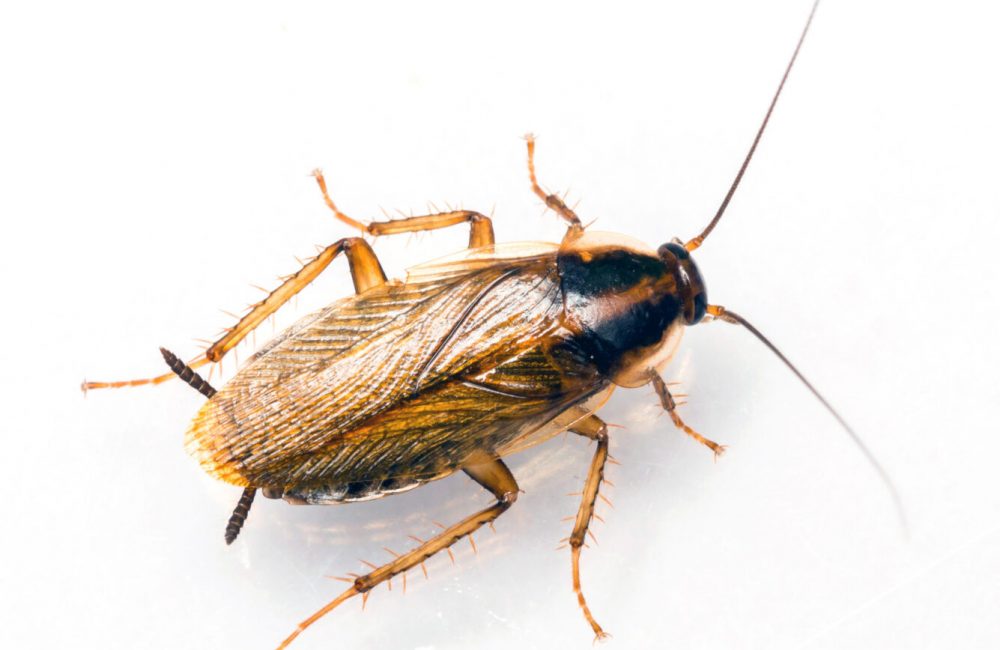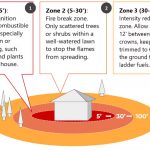9 Most Common Types of Cockroaches in U.S. [Photos]

Cockroach populations have plagued humans throughout history, persisting from the earliest human settlements. They’re not just ancient pests — they’re ancient survivors. The oldest cockroach fossils date back 145 million years. Today, these resilient common pests boast over 4,600 species worldwide, but the vast majority never come into contact with humans.
Among the countless types of cockroaches, only about 30 species thrive in environments shared with humans. Even fewer have infiltrated homes in the United States. Cockroaches love high humidity. These different types of cockroaches are masters at exploiting crevices and hiding spots, making them challenging for homeowners to manage without proper pest control strategies.
In this article, I’ll discuss the most common types of cockroaches found in North American homes along with cockroach control. Discover where they lurk, their varying sizes, and how to identify each species to effectively combat infestations.
Most Common Cockroach Species in United States
German Cockroach

Quick Facts:
- Where is it found?: Global Distribution
- Size: About 1/2 to 5/8 inches long
- Habitat: Near Water (prefers Kitchens, Bathrooms)
- Distinct Traits: Tan to black, two parallel streaks of color behind the head
The Blatella germanica, or German Cockroach is likely the most common species of pest. More recent scientific studies have shown that the cockroach likely did not originate in Germany. These types of roaches has now made it to the farthest reaches of the globe – hitching rides with the human population.
The German Cockroach is the most common cockroach to find in your home. If the cockroaches you’re seeing are mostly “small”, they’re likely German Cockroaches as they max out at about a half inch long.
Compared to other roaches, this species has a high need for water. As such, you will likely find cockroach infestations around the kitchen, laundry, and bathroom. While this species has wings, they are not competent flyers and prefer to scurry away when disturbed.
American Cockroach

Quick Facts:
- Where is it found?: Global Distribution, temperate to tropical
- Size: About 1.5 to 2 inches long – one of the largest!
- Habitat: Often found in moist basements, sewers, and crawl spaces
- Distinct Traits: Flattened oval body, Reddish Brown, often with a yellow “ring” area near the head
The Periplaneta americana, or American Cockroach is only slightly outcompeted by the German cockroach because of its temperature tolerance. American cockroaches need areas that remain slightly warmer (about 70° F), whereas the German cockroach can survive temperatures about 10° lower.
Still, the American cockroach has a global distribution and has followed humans to many different parts of the globe. The name “American” is also a misnomer since the cockroach is likely native to Africa and the Middle East.
American cockroaches are most commonly found in commercial buildings. They often hitchhike between buildings in cardboard boxes, equipment, backpacks, and more. Cockroaches can be a big problem in hospitals due to the evidence of them carrying bacteria and pathogens. Cockroaches have lengthy antennae that aid in detecting odors and vibrations.
American cockroaches are oval-shaped and strong fliers, allowing them to congregate outdoors and migrate to different buildings during the fall to take shelter before the cold winter temperatures approach.
Oriental Cockroach

Quick Facts:
- Where is it found?: Global Distribution, common in the Northwest, Midwest, and Southern US
- Size: About 1 to 1.25 inches long
- Habitat: Prefer very dark, moist places like sewers, swampy basements, and outside
- Distinct Traits: Dark brown to black, with a very glossy exoskeleton. Males have wings covering about 75% of the abdomen, females have tiny wings and a wider head.
The Oriental Cockroach, compared to the common varieties above, is slightly more inclined to live outside among leaf litter and under bushes. However, it will sometimes occupy commercial facilities that have damp basements, sewers, and drains.
These cockroaches have a noticeably dark coloration. While the males have wings and can fly short distances, the females have vestigial wings and cannot fly. Since they live close to water sources, this species can be hard to get rid of if the insecticide application is washed away quickly.
These roaches are extremely pungent.
Brown-Banded Cockroach

Quick Facts:
- Where is it found?: Northern Latitudes, common in Northeastern, Southern, and Midwest US
- Size: About 1/2 inches
- Habitat: Prefer indoor dry areas maintained at a high temperature
- Distinct Traits: Yellow-brown bands on the abdomen
The Brown-banded Cockroach is another migrant to America, likely coming from parts of Africa, through Cuba, and into the United States.
While the species is fairly widely distributed in the U.S., it is most common in humid areas of the Northeast, South, and Midwest.
Compared to the German cockroach, the Brown-banded cockroach prefers more dry conditions. Harborages may be found in bedrooms, living rooms, and other areas with no immediate access to water.
These cockroaches also prefer to hideout higher off the ground than most cockroaches. They might be in closets, furniture, crown molding and appliances.
Smoky Brown Cockroach

Quick Facts:
- Where is it found?: Southern United States (Florida, North Carolina, Louisiana, Mississippi, Texas)
- Size: About 1.25 inches long
- Habitat: Tropical areas, in moist areas around the perimeter of buildings
- Distinct Traits: Dark Mahogany coloration, similar in shape to the American Cockroach, wings that cover the entire abdomen
The Smoky Brown Cockroach is a tropical species of cockroach that has made its way into parts of the Southern United States. Unlike its close relative, the American Cockroach, this species requires much more water and cannot tolerate any amount of cold temperatures.
The smoky brown cockroach has a very dark coloration and a large size. It’s a strong flier and is attracted to light. These bugs are most commonly found outdoors around wood piles, debris, empty buildings, and palm trees.
The Smoky Brown Cockroach may also infest a building if it finds a suitable habitat. Hot buildings like garages or attics with little ventilation can be ideal places for them to live.
Australian Cockroach

Quick Facts:
- Where is it found?: Southern United States (mostly Southern Florida)
- Size: About 1.5 inches
- Habitat: Tropical areas, prefers outdoors but will move inside to survive cold spells
- Distinct Traits: Reddish-brown to dark-brown, very large wings, large head-shield with yellow margins
The Australian Cockroach is a tropical species that prefers fresh plant material more than some of its cousins. Because of this preference, it rarely enters buildings when the temperature and weather are pleasant.
Unlike many domestic cockroach species, this peridomestic species has very large wings and can fly long distances. Nymphs of this species have distinct black and translucent bands. Adults grow a large head shield that makes them look like they have two large eyes.
The Australian Cockroach closely resembles the American Cockroach. It’s about half an inch smaller and has noticeable yellow stripes on the side of its body behind the head
Brown Cockroach

Quick Facts:
- Where is it found?: Circumtropical (Introduced to many tropical areas globally)
- Size: About 1.5” (4 cm)
- Habitat: Very humid tropical areas
- Distinct Traits: A completely reddish-brown cockroach that resembles the American Cockroach.
Though the Brown Cockroach is less common in the U.S. than some of the other species presented here, you may encounter this insect from time to time. It’s most common in the southeast and Mid-Atlantic states.
In general, this species resembles the American cockroach, though it has a much more consistent color and is much thicker and shorter. This species invades indoor areas when temperatures start dropping, though it is most commonly found outdoors.
This cockroach likes to feed on plant matter. You can sometimes find it in greenhouses as well as other commercial facilities, and it rarely appears in homes.
Pennsylvania Wood Cockroach

Quick Facts:
- Where is it found?: Eastern and Central United States
- Size: About ½” – 1” (1.2-2.5 cm)
- Habitat: Prefers open areas with lots of timber
- Distinct Traits: Dark brown and glossy, with females having only vestigial wings, cream edges on the area behind the head
The Pennsylvania Wood Cockroach — as its name suggests — prefers to live in and around fallen wood. While this species is most commonly found outdoors, it can sometimes infest homes when the cockroaches hitch a ride on firewood.
Though the females are flightless, the males can fly long distances and are attracted to light at night. This often leads males to find their way indoors. Like other peridomestic species, infestations in homes are rare but can occur when the weather or temperature drives them indoors.
You don’t need any treatment when you find these cockroaches inside, as they don’t typically survive indoors. You can vacuum them up or toss them outside, and you can prevent other invaders by sealing cracks that are allowing them entry.
Surinam Cockroach

Quick Facts:
- Where is it found?: Tropical and Subtropical Regions
- Size: About 1” (2.5 cm)
- Habitat: Prefers to burrow in rich soils, sometimes inhabits greenhouses
- Distinct Traits: Adults have a very dark head shield, with a yellow-to-white edge on the head side, light brown wings covering the body
The Surinam Cockroach — also known as the Greenhouse Cockroach — is a tropical species that burrows into the soil.
Interestingly, populations of Surinam cockroaches are entirely female. Females reproduce through a process called parthenogenesis, where a female can self-fertilize and propagate without needing a male.
This species is rarely a pest in your home because they need moist soils. However, they often come into your home from the soil of plants and can live in greenhouses, gardens, and grow rooms.
These cockroaches typically stay hidden during the day and come out at night to feed on plant matter.
Cockroach Behavior
Now that you know about the different types of cockroaches you might see in the United States, there is also some more general information about cockroaches that you might find helpful if they have invaded your home.
Gregarious
The first thing you should know is that cockroaches are a gregarious species. This means that a single cockroach gets more comfortable when it is around other cockroaches. While cockroaches are not a truly “social” species like bees or ants, they tend to live in places known as “harborages.” A harborage is simply a warm, dark place where several cockroaches retreat during the day.
Studies have shown that cockroaches decide to stay in a place or move on based on how many other cockroaches are there. If there are no other cockroaches, the individual takes it as a signal that the food supply has run out. If there are many cockroaches in a harborage, each individual is much more likely to stay. Seeing small white cockroaches is a sign that there are more around. Regarding eradication, this trait can give you a huge advantage. You don’t have to kill every single cockroach. You simply have to reduce their numbers to the point that they make the decision to abandon their harborage. This is easily achieved by removing their food source or killing off most of them.
Eating Habits
Second, you should also know that most cockroach species are not opposed to eating each other — or each other’s feces. This can also help you eradicate an infestation. By removing their food source, the cockroaches will be forced to cannibalize each other and clean up the harborage that they were occupying. This trait can help you get rid of an infestation and reduce the dusty allergens that the harborage makes as you reduce the number of animals.
Light Averse
Lastly, it’s important to note that most cockroaches actively avoid light sources. This has both benefits and drawbacks. If you turn on the light in your kitchen and a cockroach runs away, you should know that hundreds more are probably hiding in the dark. If you find a place where the roaches hide, you can make them move away by leaving a bright light on the area all the time and shaking the area many times to make sure the roaches don’t feel safe.
How To Get Rid of Cockroaches
If you spot cockroaches in your home, there are several ways to get rid of them. Start by removing the things that attract them. Cockroaches are drawn to food, so keep your kitchen surfaces spotless and pantry items sealed. Store food in airtight containers. Additionally, roaches feed on non-food items such as hair, soap, and toothpaste, so it’s important to keep your home clean. Eliminate water sources by fixing any leaks, as roaches thrive in moist environments. Check for and repair leaky pipes or faucets. If you have a basement, use dehumidifiers.
Next, address hiding spots and entry points these pests use. Roaches often hide in dark, cluttered areas, so clear the clutter in your home or garage. Seal cracks or holes in your home’s foundation and close gaps under doors. Outside, maintain clean gutters and trim landscaping near your house to reduce outdoor roach populations. Glue traps help determine the severity of the infestation, and baiting with boric acid mixed with sugar and water can be effective. Insect growth regulators help prevent roaches from maturing and reproducing, while gel baits reach hard-to-access areas.
Finally, use natural repellents and household items to discourage roaches from entering. Mix essential oils like citrus, oregano, and rosemary with water and spray around entry points. Sprinkle diatomaceous earth where roaches travel to dehydrate and kill them. Baking soda mixed with sugar can also serve as bait. While these methods help control small infestations, for larger problems, I recommend calling a professional exterminator to completely remove roaches.
Final Thoughts
Understanding the nine most common cockroach species in the United States is crucial for effective pest control. Each species, from the common German cockroach to the less-common Surinam cockroach, has different habits and preferences. This makes them both interesting and strong pests. These cockroaches inhabit various environments, from wet kitchens to dry, hot areas. Knowing their specific traits helps you identify and eliminate infestations more accurately.
Adopt a proactive approach to get rid of these pests. By recognizing the signs of different species and employing specific control methods, you can greatly reduce or remove cockroach populations. Clean frequently, seal entry points, and use the right baits and repellents to keep your home cockroach-free. For severe or long-term infestations, call professional exterminators who can provide expert solutions for complete removal. Success in cockroach control depends on a combination of vigilance, cleanliness, and informed intervention.
Frequently Asked Questions
What are the worst roaches to get rid of?
German cockroaches are among the hardest to get rid of. They are difficult to spot, reproduce quickly, and can resist insecticides. Their light brown color and dark antennae make them hard to see. They often require rotating multiple types of baits to control.
What bugs can be mistaken for a roach?
Several bugs can be mistaken for a roach, including crickets, water bugs, and beetles.
What is a sign of a cockroach infestation?
A sign of a cockroach infestation includes finding droppings resembling coffee grounds or black pepper. Also, a bad smell may show they are present. You may also find shed skins and oval-shaped egg cases near their hiding places.






Leave a Reply